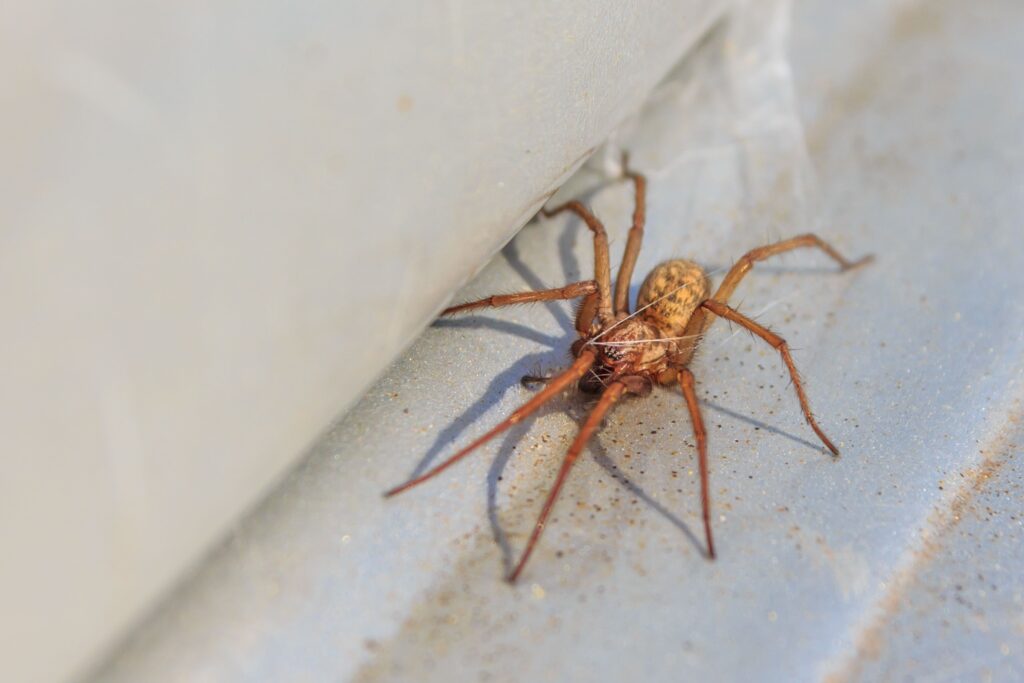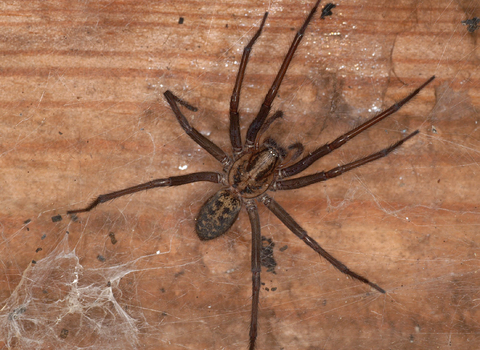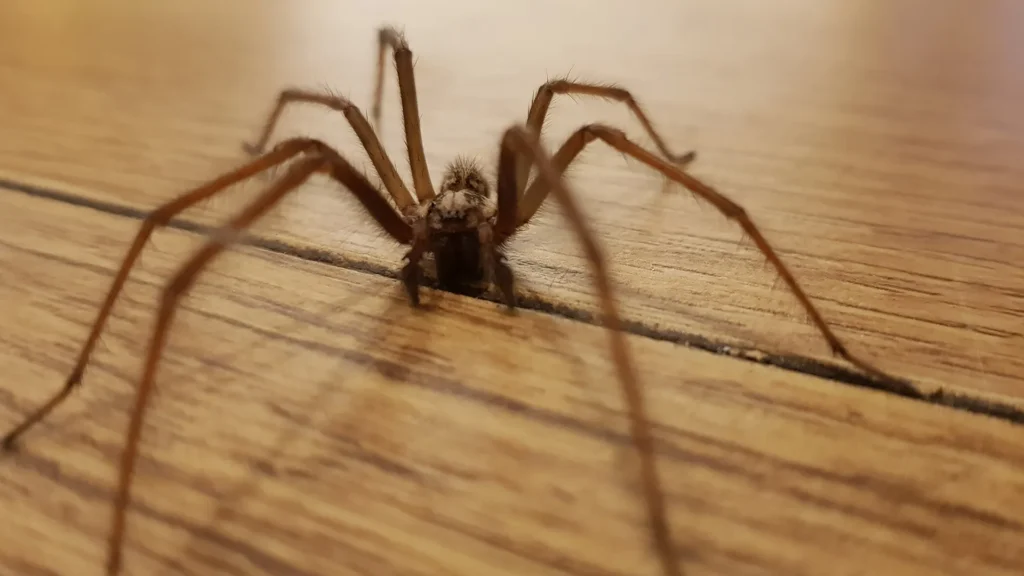Spider Removal Services by Pest Control Xperts in Santa Cruz
Serving homes, apartments, dormitories, hotels, and healthcare offices throughout Santa Cruz, Ben Lemond, Aptos, Soquel, Felton, Scotts Valley, Capitola, Mount Hermon, California, and Surrounding Areas
Professional Spider Control & Extermination in Santa Cruz, Capitola, and Soquel
Are you constantly battling spiders in your Santa Cruz home or business, only to find them reappearing days later? That unsettling feeling of spotting another web, another eight-legged intruder, is a clear sign that your DIY efforts are merely temporary illusions undone by a hidden, thriving colony. At Santa Cruz Pest Control Xperts, we understand your frustration. We don’t just eliminate the spiders you see, we eradicate the problem at its source, targeting the queen and nest to provide lasting peace of mind for properties across Santa Cruz, Capitola, Soquel, Aptos, Live Oak, and Scotts Valley.
Why Spiders Appear in Santa Cruz and Surrounding Communities
Santa Cruz, with its unique blend of coastal charm and lush landscapes, unfortunately, provides an ideal environment for various spider species to thrive. Our Mediterranean climate, characterized by mild, wet winters and warm, dry summers, creates seasonal patterns that drive spiders indoors seeking shelter and warmth as temperatures fluctuate. The proximity to the Pacific Ocean brings coastal fog, contributing to the moisture levels that many spiders and their prey find attractive. Local geographical features, including our abundant forests and riparian areas, further enhance these moist conditions, drawing spiders closer to residential and commercial properties.
Beyond natural factors, urban development and common architectural styles in Santa Cruz, Capitola, and Soquel play a significant role in infestations. Historic wooden homes, dense commercial districts, and newer suburban developments all present unique vulnerabilities. Spiders exploit small cracks and gaps around doors, windowsills, and foundations to gain entry. Cluttered basements, attics, and garages offer undisturbed havens for them to build webs and lay eggs. Even our vibrant urban gardens, while beautiful, can influence spider activity, with mulch cover and flowering plants sometimes increasing their presence.
Types of Spiders Commonly Found in Santa Cruz County
Understanding the specific spider species common to Santa Cruz and its neighboring communities is the first step in effective spider control. Here are some of the most frequently encountered spiders in our region:
- Black Widow Spider (Latrodectus hesperus): Easily identifiable by its glossy black body and distinctive red hourglass marking on the underside of its abdomen. These venomous spiders prefer dark, undisturbed areas such as woodpiles, sheds, crawl spaces, cluttered garages, and under decks and patios. While their bite can be serious, they are generally shy and not aggressive unless threatened.
- Brown Widow Spider (Latrodectus geometricus): A close relative of the black widow, the brown widow is typically lighter in color, ranging from tan to dark brown, with an orange or yellow-orange hourglass marking. They are increasingly common in urban areas of Southern California, including Santa Cruz, and are often found around urban structures, outside homes, in parks, and landscaping.
- Common House Spider (Parasteatoda tepidariorum): These small, brownish spiders are frequent indoor residents, known for building messy, irregular cobwebs in corners, under furniture, and around windows. They are generally harmless.
- Jumping Spiders (family Salticidae): These active hunters are recognized by their large, forward-facing eyes and their characteristic “jump” when pursuing prey. They do not build large webs for catching food but use silk for safety lines and small retreats. They are harmless to humans.
- Wolf Spiders (family Lycosidae): Often mistaken for small tarantulas due to their size and hairy appearance, wolf spiders are ground-dwelling hunters. They are typically brown, gray, black, or tan with dark stripes and possess excellent night vision. You’ll often find them in gardens and areas with ground cover.
- Orb Weavers (family Araneidae): These spiders are responsible for the classic, intricate spiral webs often seen in gardens, on porches, and near outdoor lights. They rely on web vibrations to detect prey.
- Yellow Sac Spiders (Cheiracanthium species): Pale yellow or beige, these spiders create silk retreats in corners or along ceiling edges rather than large webs. Their bites can cause minor discomfort.
- Cellar Spiders (family Pholcidae): Commonly known as “daddy-long-legs,” these spiders have extremely long, thin legs and small bodies. They construct messy, tangled webs in quiet, damp areas like cellars, garages, and attics. They are harmless.
- Grass Spiders (Agelenopsis): These shy, brown spiders with dark stripes are known for building distinctive funnel-shaped webs in lawns and bushes.
- Desert Recluse (Loxosceles deserta): While the notorious brown recluse is not typically found in California, the native desert recluse is present in some southern areas of the state. These reclusive, nocturnal spiders build small webs as tripwires or retreats and prefer undisturbed, unpopulated areas.
Problems Spiders Create for Homes and Businesses
An unchecked spider infestation in your Santa Cruz property can lead to a range of unpleasant and potentially harmful issues. Beyond the obvious aesthetic concerns of unsightly webs, spiders can significantly impact your daily life and even the integrity of your property.
- Unsettling Presence and Daily Frustration: The constant sight of spiders and their webs can create an uncomfortable and unhygienic feeling in your home or business. This persistent presence can be a source of ongoing stress and frustration for residents and visitors alike.
- Spider Bites: While most spiders in Santa Cruz are not considered dangerous, species like the black widow and brown widow can deliver venomous bites that require medical attention. Even non-venomous spider bites can be painful and cause localized reactions.
- Contaminating Food and Surfaces: Spiders can inadvertently contaminate food preparation areas and stored goods as they move through your property, leaving behind silk, droppings, and even egg sacs.
- Structural Damage (Indirectly): While spiders themselves don’t typically cause structural damage, their presence often indicates a larger underlying issue. Many spiders are attracted to other pests, which may be causing damage to wood or other building materials.
- Impact on Business Reputation: For commercial properties in Santa Cruz, an visible spider infestation can deter customers, negatively impacting your brand reputation and potentially leading to lost business.
- Allergic Reactions: For some individuals, the presence of spiders or their droppings can trigger allergic reactions, leading to respiratory issues or skin irritations.
- Rapid Reproduction and Satellite Colonies: Spiders can reproduce quickly, leading to an escalating problem. A single female can lay numerous egg sacs, each containing dozens or even hundreds of spiderlings. These new generations can establish satellite colonies throughout your property, making the infestation even harder to control without professional intervention.
Signs of an Escalating Spider Infestation
Recognizing the early signs of a growing spider problem in your Santa Cruz home or business is crucial for effective intervention. Don’t wait until the situation is overwhelming. Look for these warning indicators:
- Consistent Spider Web Trails: While a stray web here or there is common, a noticeable increase in the number of webs, especially in undisturbed areas like corners, eaves, and basements, suggests a growing population. Pay attention to webs that are frequently rebuilt after being cleared.
- Frequent Spider Sightings: If you’re seeing spiders regularly, not just occasionally, it’s a strong indication that they are breeding and establishing themselves within your property. This includes seeing them in different rooms or at various times of day.
- Presence of Egg Sacs: Spider egg sacs are often small, silken, and can be found attached to webs or hidden in secluded spots. The presence of these sacs means new generations of spiders are on the way, signaling a rapidly expanding infestation.
- Increased Presence of Other Pests: Spiders are predators, and a sudden increase in their numbers can sometimes be a secondary indicator of a larger underlying pest problem. If your home has an abundance of insects like flies, ants, or beetles, spiders will be attracted to the readily available food source.
- Spiders in Unusual Locations: Finding spiders in areas where you don’t typically see them, such as inside cupboards, drawers, or even in your bed, can indicate that their population has grown to the point where they are seeking new territories within your home.
- Frass or Sawdust (for specific species): While not directly from spiders, if you notice frass (fine sawdust-like material) or other debris, it could indicate the presence of wood-destroying insects that some spiders prey upon, further indicating a food source for spiders.
- Specific Odors: In very severe infestations, particularly with certain spider species, a faint, musky odor might be noticeable, though this is less common.
Why Professional Extermination is Essential for Spider Removal
Many Santa Cruz property owners attempt to tackle spider problems with store-bought sprays and traps, only to find their efforts result in temporary relief. These DIY methods create illusions undone by the hidden colony, providing a false sense of security while the true problem persists and often worsens. Here’s why professional spider extermination from Santa Cruz Pest Control Xperts is the only true solution:
- DIY Only Kills Foragers: Over-the-counter sprays and traps primarily target visible, foraging spiders. These are merely the workers of the colony, venturing out for food. Killing them does nothing to address the core of the infestation: the queen and her nest, which remain hidden and continue to produce new generations.
- Colony Budding: In some cases, disturbing a spider colony with ineffective treatments can actually cause a phenomenon known as “budding.” This means the colony, feeling threatened, will split into multiple smaller colonies, spreading the infestation to new areas of your home or business and making the problem exponentially harder to control.
- Failure to Eliminate the Queen and Nest: The queen is the reproductive engine of a spider colony. As long as she and her egg sacs are intact, the infestation will continue. Professional exterminators have the knowledge, tools, and experience to locate and eliminate these crucial elements, ensuring complete colony destruction.
- Misidentification of Species: Many people struggle to correctly identify spider species. Misidentifying a venomous spider as a harmless one can lead to inadequate treatment and potential health risks. Professionals accurately identify the species to implement the most effective and safe treatment plan.
- Lack of Residual Protection: DIY products often offer limited residual effects, meaning their effectiveness wears off quickly. This leaves your property vulnerable to re-infestation shortly after treatment. Professional treatments provide longer-lasting protection.
- Safety Concerns: Improper use of pesticides can pose risks to your family, pets, and the environment. Professionals are trained in the safe and targeted application of treatments, minimizing exposure while maximizing effectiveness.
- Addressing Entry Points and Contributing Factors: A professional service goes beyond just killing spiders. We identify and advise on sealing entry points, managing moisture, and addressing other environmental factors that attract spiders to your property. This comprehensive approach prevents future infestations.
Our Spider Removal Method
At Santa Cruz Pest Control Xperts, we employ a meticulous, multi-step process designed for complete spider colony elimination and long-term prevention across Santa Cruz, Aptos, and Scotts Valley.
- Thorough Consultation & Inspection: Our process begins with a detailed discussion of your spider concerns. We then conduct a comprehensive inspection of your property, both indoors and outdoors, to identify spider species, locate nests, egg sacs, common entry points, and assess the severity of the infestation. This includes examining areas like basements, attics, crawl spaces, foundations, and landscaping.
- Customized Treatment Plan: Based on our findings, we develop a tailored spider baiting system and treatment strategy. This plan considers the specific spider species, the extent of the infestation, and the unique characteristics of your property to ensure maximum effectiveness with safe application methods.
- Targeted Professional Spider Treatment: We apply professional-grade treatments directly to identified spider habitats, entry points, and harborage areas. Our focus is on colony elimination, ensuring that the queen and nest are eradicated to prevent future generations. This may include the use of residual products, dusts, and targeted sprays.
- Exclusion & Maintenance Recommendations: Beyond treatment, we provide expert recommendations for exclusion techniques to seal off entry points and make your property less inviting to spiders. This includes advice on sealing cracks, repairing screens, and managing moisture. We also offer guidance on ongoing maintenance practices to help deter future infestations.
- Monitoring & Follow-Up: Our commitment extends beyond the initial treatment. We offer monitoring and follow-up services to ensure the effectiveness of our spider removal efforts. This allows us to address any lingering activity and provide ongoing protection, giving you lasting peace of mind.
Why Santa Cruz Relies on Santa Cruz Pest Control Xperts
When it comes to effective spider control in Santa Cruz, Capitola, and Live Oak, property owners consistently choose Santa Cruz Pest Control Xperts for our unparalleled expertise and unwavering commitment to complete colony destruction. We understand the unique challenges posed by local spider populations and the specific environmental factors that contribute to infestations in our region.
Our team possesses extensive regional familiarity, allowing us to accurately identify local spider species and implement the most effective treatment strategies. We prioritize safe application methods, ensuring the well-being of your family, pets, and the environment while delivering powerful results. Our focus is always on eliminating the problem at its source, not just the visible symptoms, through thorough inspection and targeted treatments that eradicate the queen and nest. We are dedicated to providing comprehensive solutions and stand by our commitment to follow-up, ensuring your property remains spider-free.
Frequently Asked Questions About Spider Control
How to get rid of a spider in the kitchen permanently?
Permanently getting rid of spiders in your kitchen requires a multi-faceted approach. Beyond simply killing visible spiders, you need to eliminate their food sources by controlling other kitchen pests, seal all potential entry points like cracks around windows and pipes, and maintain a clean, clutter-free environment. Professional spider treatment targets hidden nests and provides long-term solutions that DIY methods cannot achieve.
Are carpenter spiders a serious threat to my home?
While the term “carpenter spider” is not a commonly recognized species, if you are referring to a spider that might be associated with wood damage, it’s important to clarify. Spiders themselves do not typically cause structural damage to homes. However, if you are seeing spiders in conjunction with wood damage, it’s more likely that the spiders are preying on other insects, such as carpenter ants or termites, which *do* cause significant structural damage. A professional inspection can identify the true source of the problem and address both the pest causing damage and the spiders attracted to them.
Why do I keep getting spiders in my house?
You likely keep getting spiders in your house because of readily available food sources (other insects), accessible entry points (cracks, gaps, unsealed windows/doors), and suitable harborage areas (clutter, undisturbed spaces like basements and attics). Seasonal changes, especially cooler weather, also drive spiders indoors seeking shelter. Addressing these underlying factors with professional spider control is key to long-term prevention.
What are the signs of a major spider infestation?
Signs of a major spider infestation include a significant increase in the number of webs throughout your property, frequent sightings of spiders in various rooms, the presence of numerous spider egg sacs, and an increase in other insect populations that serve as a food source for spiders. If you’re consistently clearing webs only for them to reappear quickly, it’s a strong indicator of a widespread problem.
Related Spider Control Topics
Spider Prevention Tips for Santa Cruz Homes
Sealing Entry Points
Learn how to effectively seal cracks, gaps, and openings around your home’s foundation, windows, and doors to prevent spiders from entering.
Maintaining a Clean Environment
Discover the importance of decluttering and regular cleaning, especially in storage areas, to eliminate spider hiding spots and breeding grounds.
Moisture Control Strategies
Understand how managing humidity levels and fixing leaks can make your home less attractive to spiders, as many species are drawn to moist environments.
Understanding Venomous Spiders in California
Identifying Black Widows
Detailed information on recognizing the distinctive features of the black widow spider and understanding its behavior.
Differentiating Brown Widows
Learn how to distinguish brown widow spiders from other species and their prevalence in urban areas.
Dispelling Brown Recluse Myths
Information on why the brown recluse spider is rarely found in California and which native recluse species are present.
Seasonal Spider Activity in Santa Cruz
Fall Spider Invasions
Explore why spiders tend to move indoors during the cooler autumn months in Santa Cruz.
Summer Breeding Habits
Understand how the warm Santa Cruz summers influence spider reproduction and population growth.
Spider Control for Businesses in Santa Cruz County
Commercial Pest Management Plans
Information on tailored spider control solutions for various business types, including restaurants, offices, and retail spaces.
Protecting Your Business Reputation
How professional spider extermination helps maintain a clean and professional image for your Santa Cruz business.
Integrated Pest Management (IPM) for Spiders
Eco-Friendly Approaches
Learn about environmentally responsible methods for spider control that minimize chemical use while maximizing effectiveness.
Long-Term Prevention Strategies
Understanding how IPM combines inspection, identification, treatment, and ongoing monitoring for sustainable spider management.
Contact Santa Cruz Pest Control Xperts Today
Don’t let spiders continue to be a source of stress and frustration in your Santa Cruz, Capitola, or Soquel property. The temporary illusions of DIY solutions will always be undone by the hidden colony. It’s time to invest in a professional, long-lasting solution that eliminates spiders at their source, providing you with true peace of mind. Contact us for an immediate consultation and let Santa Cruz Pest Control Xperts restore comfort and safety to your home or business. We proudly serve Santa Cruz, Capitola, Soquel, Aptos, Live Oak, and Scotts Valley, California, including zip codes: 95060, 95062, 95010, 95073, 95003, 95065, 95066, 95061, 95063, 95064, 95067, 95076.





